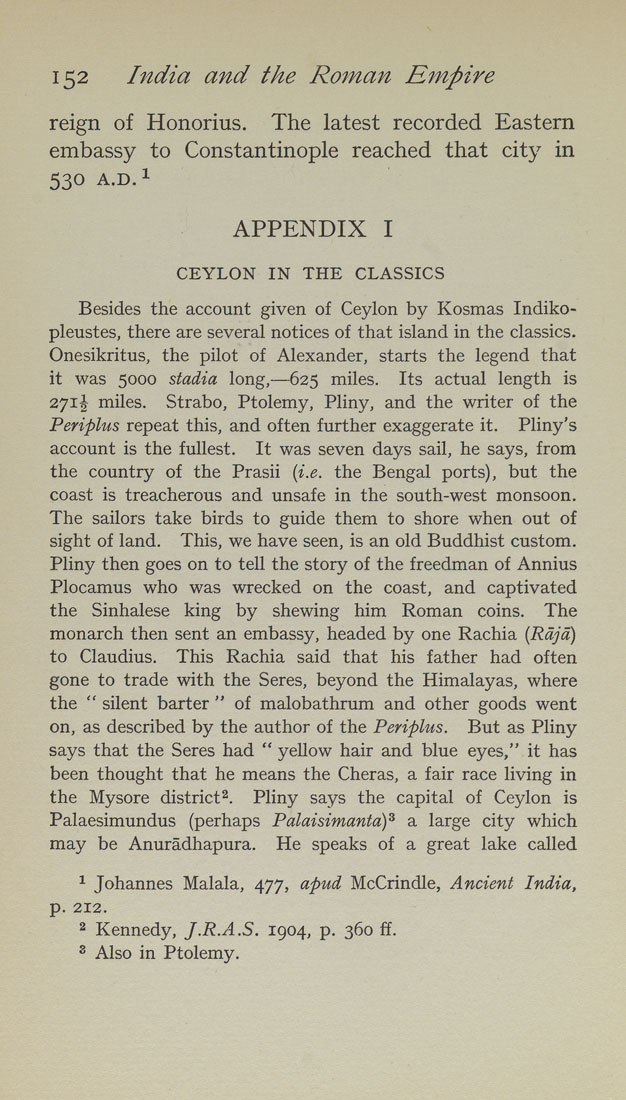152 India and the Roman Empire
reign of Honorius. The latest recorded Eastern
embassy to Constantinople reached that city in
530 A.D.i
APPENDIX I
CEYLON IN THE CLASSICS
Besides the account given of Ceylon by Kosmas Indiko¬
pleustes, there are several notices of that island in the classics.
Onesikritus, the pilot of Alexander, starts the legend that
it was 5000 stadia long,—625 miles. Its actual length is
271I" miles. Strabo, Ptolemy, Pliny, and the writer of the
Periplus repeat this, and often further exaggerate it. Pliny's
account is the fullest. It was seven days sail, he says, from
the country of the Prasii {i.e. the Bengal ports), but the
coast is treacherous and unsafe in the south-west monsoon.
The sailors take birds to guide them to shore when out of
sight of land. This, we have seen, is an old Buddhist custom.
Pliny then goes on to tell the story of the freedman of Annius
Plocamus who was wrecked on the coast, and captivated
the Sinhalese king by shewing him Roman coins. The
monarch then sent an embassy, headed by one Rachia {Raja)
to Claudius. This Rachia said that his father had often
gone to trade with the Seres, beyond the Himalayas, where
the " silent barter " of malobathrum and other goods went
on, as described by the author of the Periplus. But as Pliny
says that the Seres had " yellow hair and blue eyes," it has
been thought that he means the Cheras, a fair race living in
the Mysore district2. Pliny says the capital of Ceylon is
Palaesimundus (perhaps Palaisimanta)^ a large city which
may be Anuradhapura. He speaks of a great lake called
^ Johannes Malala, 477, apud McCrindle, Ancient India,
p. 212.
2 Kennedy, J.R.A.S. 1904, p. 360 ff.
2 Also in Ptolemy.
|








